On September 15, the 2019 China National Image Global Survey, jointly conducted by the Academy of Contemporary China and World Studies (ACCWS) and the Kantar Group was released in Beijing. According to the survey, China’s image as a major contributor to global development is gaining more recognition.
The survey was conducted in 2019 with 11,00000 respondents from 22 countries in Asia, Europe, North America, Oceania, and Africa, involving such topics as China's overall national image and influence in politics, economy, culture, and science and technology. It was the seventh of such survey conducted by the ACCWS, said Yu Yunquan, president of the ACCWS. For the 2019 survey, some new topics had been added, for example, the achievements scored by the People’s Republic of China since 1949 and China’s advocacy of exchanges and mutual learning among civilizations.
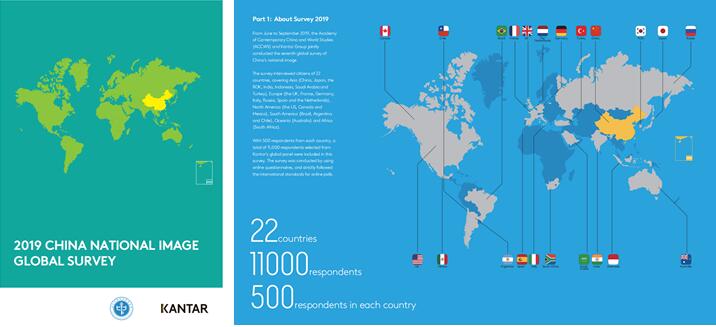
The survey was conducted in 2019 with 11,000 respondents from 22 countries.
Here are the main findings of the survey.
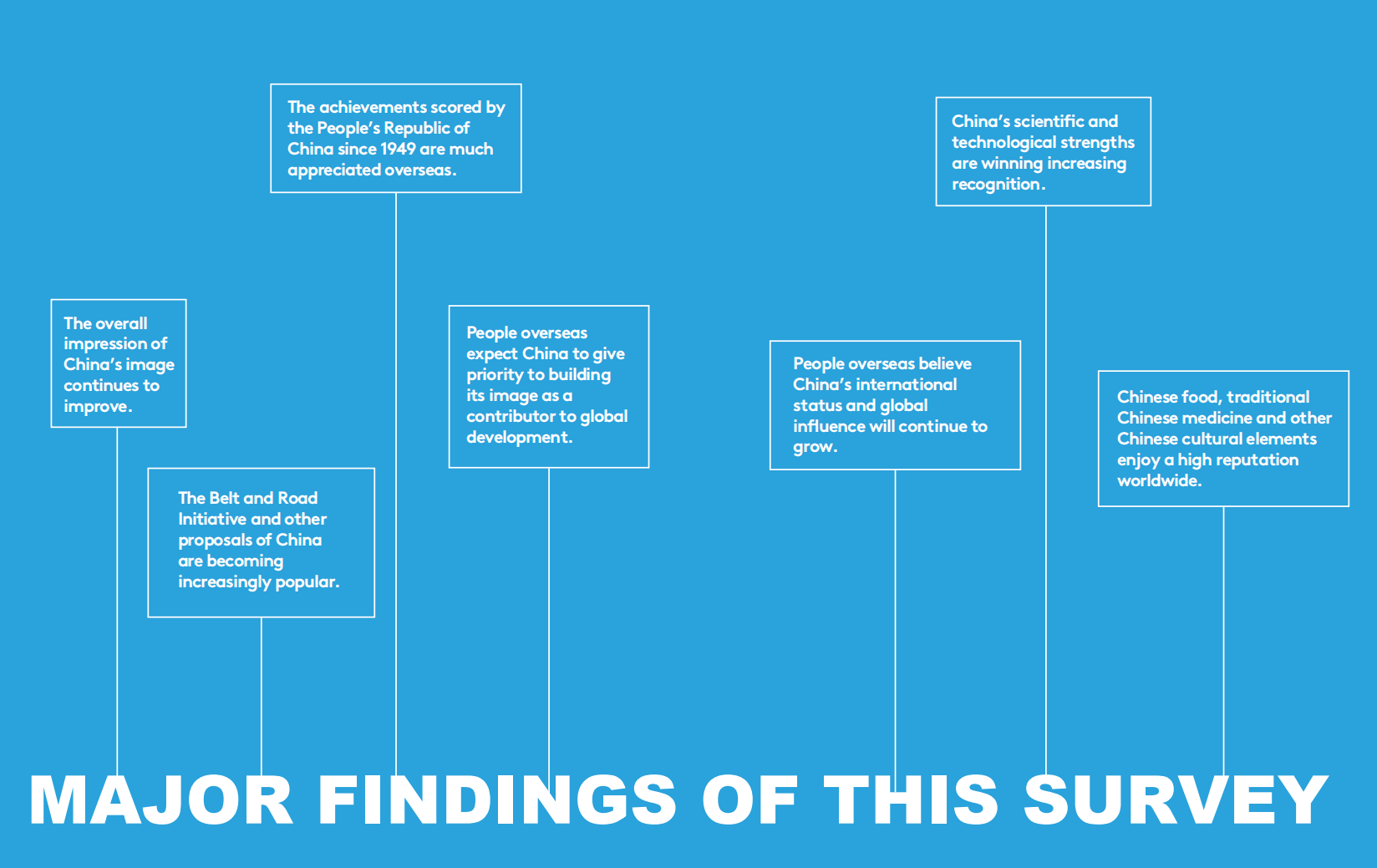
Major findings of the survey.
China’s overall image keeps improving internationally. China scored 6.3 on the 10-point system concerning its overall image, 0.1 point higher than the score in the previous survey. Generally speaking, respondents from developing countries had better impressions of China than those from developed countries, giving China a score of 7.2, and thus maintaining a slight upward curve in recent years.
Overseas respondents showed more positive response to China’s participation in global cultural programs and on security issues, both up 4 percentage points compared with the 2018 survey. Regarding its participation in global governance, the international community thought highly of China in the fields of science and technology (66 percent), economy (63 percent), and culture (57 percent).
China’s national image has kept improving over the past 70 years. This was endorsed by 63 percent of the overseas respondents, and was agreed by as many as 80 percent of the respondents in developing countries.
A contributor to global development: an image highly expected of China. Overseas respondents expected that in the next 5-10 years China should focus on building its image as a contributor to global development (31 percent), a country with a rich history in the East (27 percent), and a responsible major country (25 percent).
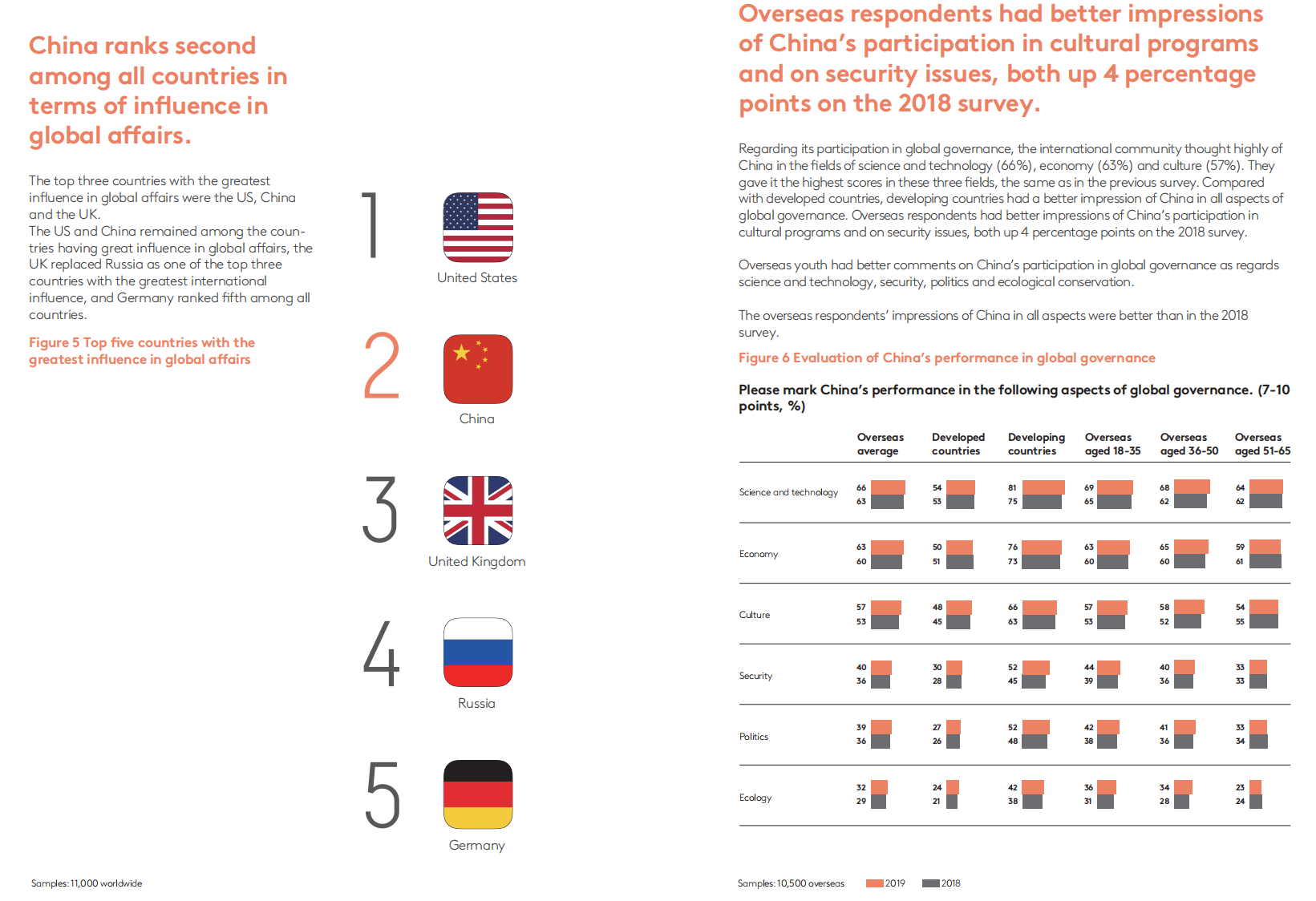
China ranks second among all countries in terms of influence in global affairs.
China’s advocacy of exchanges and mutual learning among civilizations highly appraised. More than 70 percent of the overseas respondents affirmed China’s advocacy of exchanges and mutual learning among civilizations as being positive for individuals, countries, and global governance, and the proportion was much higher in developing countries. Overseas respondents generally believed that exchanges and mutual learning among civilizations were positive for global development and human progress: 56 percent thought it helpful for addressing current global challenges, 51 percent called it a driving force behind social progress and world peace, and 51 percent deemed it helpful for peace, prosperity, and an open world.
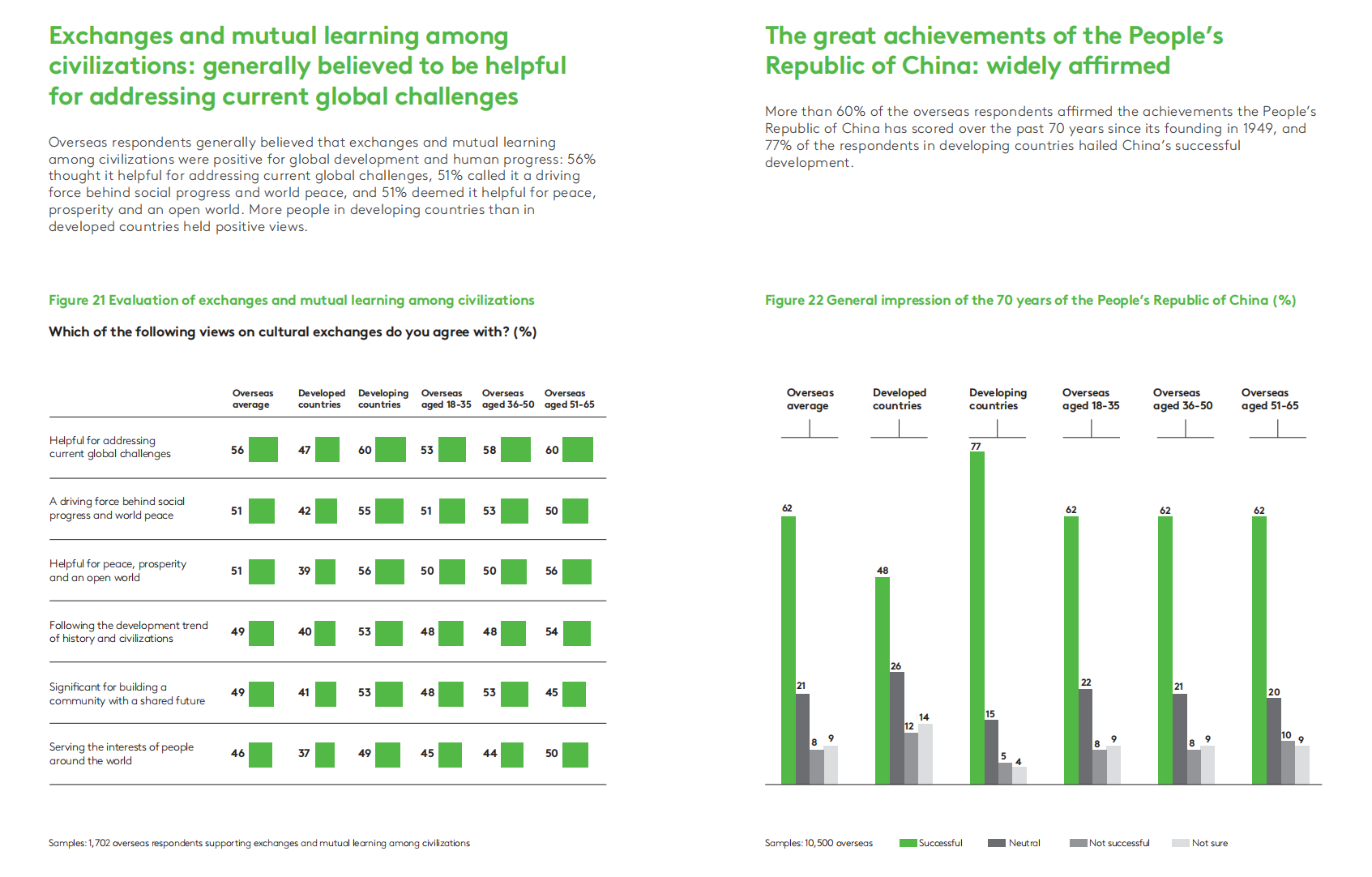
Respondents generally believe that mutual learning and exchanges among civilizations are positive for global development and human progress.
Developing countries have more positive impressions of the Belt and Road Initiative. The Belt and Road Initiative (BRI) enjoys increasing popularity, with 23 percent of the overseas respondents acquainted with it, 3 percentage points more than in 2018. Of the overseas respondents who are acquainted with the BRI, 42 percent agreed that the initiative “benefits infrastructure connectivity in the countries and regions along its routes,” 40 percent thought that it “helps increase investment and trade cooperation among the countries and regions along the routes,” and 36 percent regarded it as “a global public product with broad prospects.” Unimpeded trade and infrastructure connectivity are the most expected aspects of the BRI.
China’s technological innovation capacity is appreciated by more people. With high-speed rail remaining its best-known technological achievement. 68 percent of the overseas respondents made a positive assessment of China’s technological innovation capacity, and the proportion exceeded 80 percent in developing countries. High-speed rail (44 percent) was China’s best-known technological achievement, followed by supercomputing capability (24 percent) and manned space technology (23 percent). Focusing on the elements that best represent Chinese culture, 53 percent of the overseas respondents chose Chinese cuisine, 47 percent ticked traditional Chinese medicine, and 43 percent selected martial arts. About 27 percent, 3 percentage points higher than in the 2018 survey, of the overseas respondents tended to think that scientific inventions best represented Chinese culture.
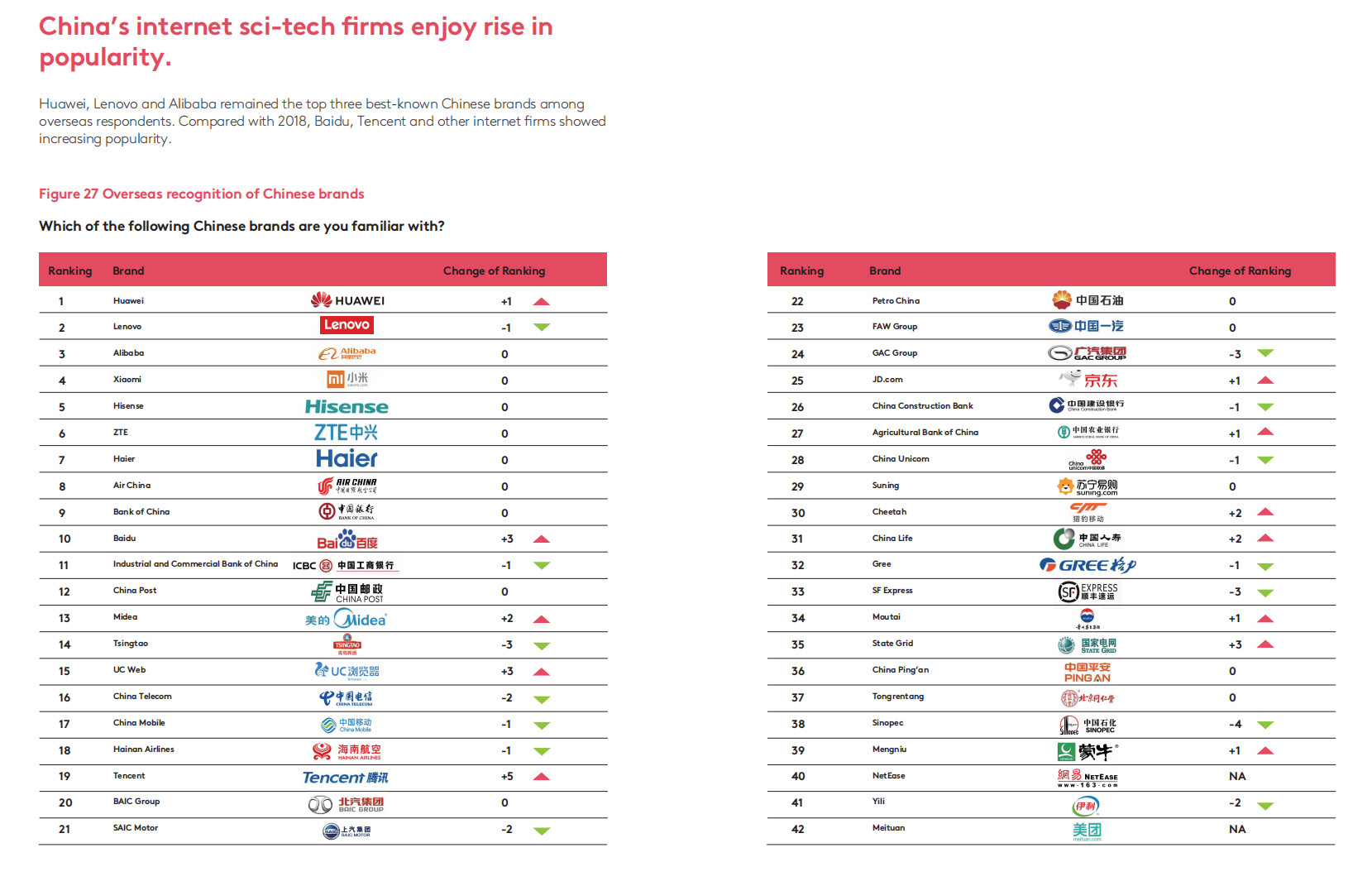
The survey shows that China’s Internet sci-tech firms enjoy a rise in popularity.
The survey is conducted online, using Kantar’s global sample base and in strict compliance with international standards. The samples reflect the demographic conditions of each country surveyed. The same methods are followed throughout the survey.